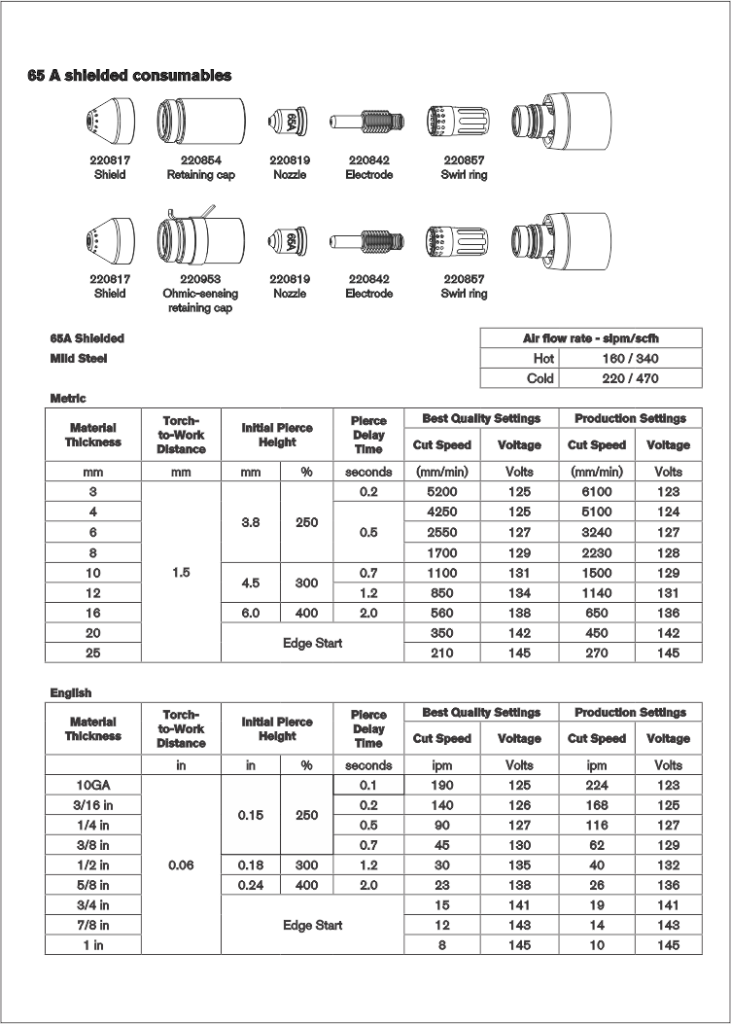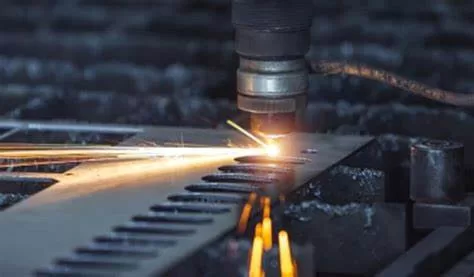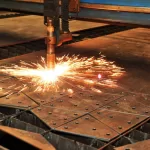Plasma arc cutting is a process of closing an open arc by conducting an electrode from a narrow nozzle to the workpiece. The process is so simple that it causes most people to rush through plasma cutting at the expense of quality maintenance.
Tips and Tricks for CNC Plasma Cutting
Welding Town
Plasma cutters are so easy to use that people don’t follow any practices that increase cutting efficiency, improve cut quality, and ensure tool life. Whether you are using a plasma cutter in your workshop, for a DIY project, for motorsports, or for artistic endeavors, it is important that you employ the proper techniques to achieve better results.
What is CNC plasma cutting?
Plasma cutting is a thermal cutting technique that uses a plasma torch. It is designed to cut through electrically conductive metals, such as steel, aluminum, brass, titanium, and copper – both thick and thin. CNC in CNC plasma cutting stands for computer numerical control. As the name suggests, the accelerated jet of hot plasma is controlled and directed by a computerized manufacturing process, leaving no room for human error.
How does CNC plasma cutting work?
Plasma cutters operate by forcing a gas or compressed air at rapid speed through a nozzle. An electric arc is then introduced to the gas, creating plasma or ionized gas which can slice through metals at speeds of up to 500 inches per minute. The motions of the plasma torch or cutter are controlled and directed by a set of numerical codes in a program, also known as the G-code (a simple programming language for CNC machines), allowing for highly accurate cuts.
Unlike many hobby CNC technologies, you need a large amount of space in a well-ventilated area in order to operate a CNC plasma cutter safely.
What is CNC plasma cutting used for?
Plasma cutting is a versatile technology used to cut a wide range of materials, including copper, titanium, steel and more. Due to the way the plasma torches penetrate through materials, CNC plasma cutting is used for cutting sheets of metal rather than a block of material – like CNC milling and turning.
Plasma cutters are highly efficient. It takes one-fourth of the time it does for most similar technology to make the same cut. Its accurate motions guided by computer numerical codes and fast process times make it great for making clean and quick cuts for sheet metal prototypes and low-volume productions.
Due to its many advantages, CNC plasma cutting is often used to make high-precision sheet metal parts for the aerospace industry and create uniquely shaped automotive components. It has wide applications for a range of industries.
The Different Types of CNC Processes
Apart from CNC plasma cutting, there are several other common types of precision CNC machining processes. They include:
- CNC Milling
- CNC Turning
- CNC Electrical Discharge Machining (EDM)
- CNC Laser Cutting
In order to take full advantage of the benefits of CNC machining, product designers and engineers must familiarize themselves with the process and considerations.
Tips and Tricks to Improve CNC Plasma Quality
Here are a few tips and practices to keep in mind when using a plasma cutter to ensure the quality and texture of the final cut is smooth and appears premium.
Pick the Right Plasma Cutter
When choosing a plasma cutting machine, you need to consider key factors such as cutting speed, duty cycle, output power, input power, weight and size. The type of work you will be doing with the cutter will also influence your buying decision.
- Cutting Speed: The cutting speed of a CNC plasma cutter is measured in inches per minute (IPM), which has a significant impact on production time. One plasma cutter may take five minutes to cut a 1/2-inch piece of material, while another may only take one minute.
- WORK CYCLE: The work cycle is defined as the amount of time a machine can work continuously in a 10-minute cycle until it overheats. Larger duty cycles are required for longer cuts and high capacity applications or hot environment settings.
- Output Power: Desired output power is estimated based on the thickness and type of material to be cut.CNC milling machines use two criteria: rated cut and severe cut. Rated cuts are medium metal thicknesses that an operator can manually cut at 15 inches per minute (IPM). Severe cut is the maximum thickness that a plasma cutter can easily handle.
- Input Power: Input power is an important criterion for determining whether you need to use the cutter in a fixed location or plug it into a different power source. Purchase a plasma cutter with multiple power options. Some plasma cutters can switch between 120-volt and 240-volt power sources.
- Weight and size: If you need a portable cutter, choose a handheld unit that weighs no more than 45 pounds. For some use cases, bulky plasma cutters may offer greater efficiency but not portability.
Use Appropriate Cut Charts

Refer to the cutting charts listed in your system manual and select the appropriate process for your cutting application. The relevant process is then selected based on factors such as material thickness, material type, desired cut quality and productivity goals.
After considering the above factors, the cutting chart will mention the consumables required, as well as the relevant plasma and protective gases. In addition, the cutting parameters list the appropriate gas pressure, arc voltage, torch to workpiece distance and cutting speed.
Piercing
It is recommended to perforate high and cut low. As a rule of thumb, it is recommended to perforate at a cutting height or 1.5-2 times the maximum transmission distance. Piercing high helps avoid bridging, secondary arcing, and flameouts.
Progressive piercing can also be used if your CNC machine supports it. This feature allows you to move the gun slowly while performing the piercing operation so that the molten material at the front of the gun forms a “rooster tail”.
Another helpful tip is not to measure piercing height by eye. Consider using the available initial height sensing feature. Avoid manual piercing as it is impractical even for experienced operators.
A final tip is to not perforate beyond the system limits. The perforation rating is usually 1/2 of the cutting rating.









